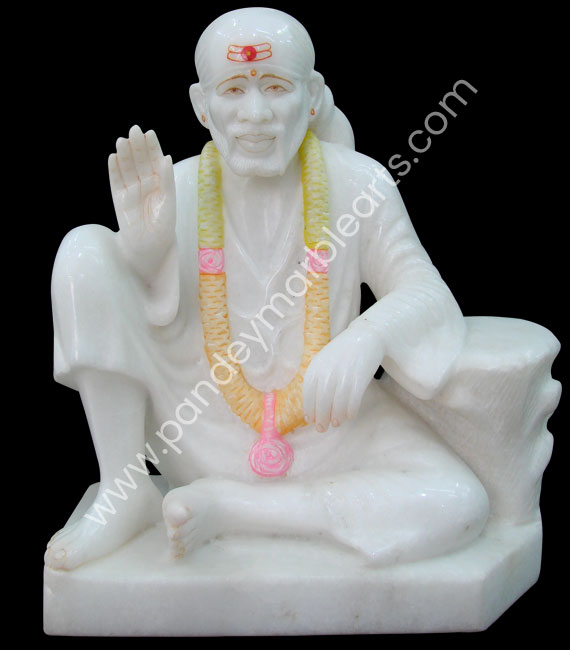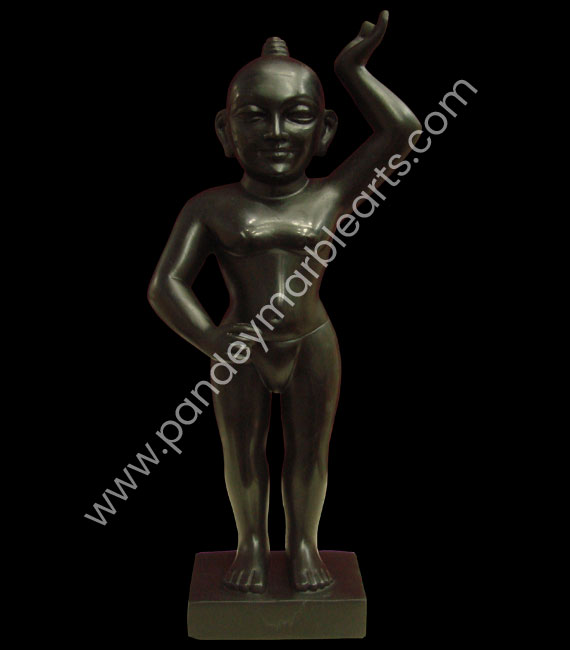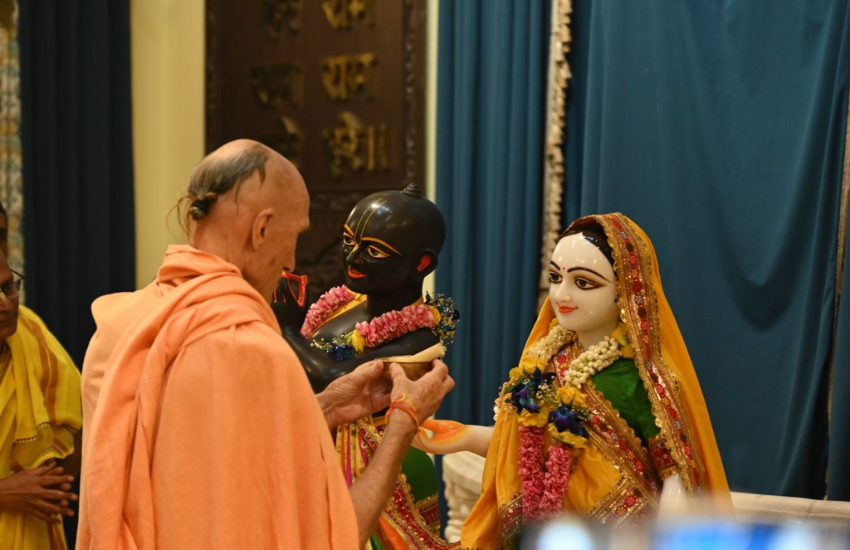Idol worship in Hinduism has been part of life for centuries. Since ancient times, people have been performing moorti pooja as a way to connect with the divine in a form they can see, touch, and feel, offer prayers to, and seek blessings from.
According to Hindu traditions, once a deity is invoked into the idol through the ritual of Prana Pratishtha, it becomes a living embodiment of the divine presence. Even great saints like Adi Shankaracharya and Ramanujacharya promoted murti Puja as a meaningful path to spiritual growth.
If you are doubtful about idol worship, this write-up will help clear your perspective. In the sections ahead, we will look at why Hindus worship idols, the spiritual meaning hidden in this practice, the rituals associated with it, and how idols reflect the deep symbolism of Hindu philosophy.
Why Do Hindus Worship Idols?
Hindus worship idols to experience God in a form they can see and relate to. It is hard for humans to connect with formless energy, so idols give a tangible presence of the divine. Worship is never about the stone, metal, or wood itself but about what spiritual essence it represents.
Idol worship provides a focal point for meditation, prayer, and rituals. They help people develop patience, gratitude, and positive values. Offering prayers, chanting, and performing rituals around idols also brings mindfulness into daily life.
Meanwhile, Hindu god idols also carry cultural and educational significance. Their forms, gestures, and ornaments tell tales from Hindu mythology, showing moral values and spiritual teachings.
What is the Spiritual Significance of Idol Worship?
According to the Shastra and Puranas, the ultimate God is formless and infinite, yet human minds connect deeply with a visible form. Worshipping an idol allows devotees to focus their thoughts, express devotion, and feel God’s presence in a personal and meaningful way.
Marble murtis are considered pious because of their purity, durability, and the sacred care taken during their creation. The spiritual significance of idol worship is to guide the mind and soul. When devotees offer flowers, light lamps, or chant mantras before an idol, they enter a state of reflection and inner peace. This practice encourages mindfulness and helps calm the mind.

Spiritually, murti pooja serves as a source of inspiration and guidance. It allows the soul to rise above material concerns and connect with higher consciousness.
What are the Key Rituals Involving Idol Worship?
Idol worship is full of meaningful rituals that help devotees connect with the divine. Here are some important rituals for worshipping the idols:
- Prana Pratishtha: This is the ritual that invokes life energy into the idol, making it a living presence of the deity. It allows devotees to feel a deeper connection and devotion during prayers.
- Abhishekam: The ceremonial bathing of the idol with water, milk, or honey. It is an act of purification and helps calm the mind while showing love and reverence.
- Alankara: Decorating the idol with clothes, garlands, and ornaments. This is a way to honor the divine and express devotion through care and attention.
- Aarti: Waving lamps and singing hymns or prayers in front of the idol. The light represents knowledge and positivity, filling the space with peace and spiritual energy.
- Naivedya: Offering fruits, sweets, or other foods to the idol. This expresses gratitude and devotion, making worship a heartfelt exchange.
- Chanting and Meditation: Reciting mantras or prayers helps focus the mind, deepen concentration, and invite a sense of inner calm and spiritual clarity.
How Do Idols Reflect Hindu Philosophy and Symbolism?
In Hinduism, idols are not merely objects of worship. They are living symbols that convey deep philosophy and spiritual meaning.
The forms of idols often show divine qualities. For example, multiple arms on a deity represent the ability to perform many actions for the welfare of the world. A calm and smiling face conveys peace, compassion, and the importance of inner calm.
Colors, clothing, and ornaments of idols also have significance. Bright colors often reflect energy, purity, and positivity. Jewelry and other decorations symbolize abundance, protection, and the richness of life guided by dharma.
The positions and gestures of idols, such as the hand raised in blessing or meditation posture, are visual lessons in devotion, discipline, and surrender.
Common Myths and Facts About Idol Worship
Idol worship is an important practice in Hinduism, yet it is often misunderstood. Many myths surround the practice, leading to confusion about its purpose and significance. Understanding the facts can help people appreciate the spiritual depth of idol worship.
Myth 1: Idols are Just Stones or Metal Objects
Many believe that worshipping an idol means worshipping a lifeless object. In reality, idols are sacred representations of the divine. Through rituals like Prana Pratishtha, life energy is invoked into the idol, making it a living presence of God. Devotees do not worship the stone or metal itself but the divine essence it represents. It provides a tangible form to meditate upon, helping people connect with God in a personal and meaningful way.
Myth 2: Idol Worship is Superstition
Some think that idol worship is mere superstition with no spiritual value. This is not true. Idol worship is a structured practice designed to nurture devotion, mindfulness, and moral growth.
Worshipping an idol helps devotees develop patience, gratitude, and inner calm. Daily rituals, offerings, and prayers create a routine that strengthens focus and encourages self-reflection.

Myth 3: Only Temples have True Idols
It is often believed that divine presence is limited to idols in temples. In fact, moortis at home shrines are equally sacred. A marble murti, when consecrated, becomes a spiritual center that can guide and inspire daily life. For example, placing a Ram Darbar statue in the home temple is considered a source of blessings. It symbolizes unity, harmony, and devotion
Both home and temple idols allow devotees to experience God’s presence. Worshipping an idol in a clean and sacred space invites positive energy and spiritual guidance into one’s life.
Myth 4: Idol Worship Replaces Direct Connection with God
Some assume that using an idol creates distance from the formless divine. In truth, idols help bridge the gap between the human mind and the formless God. They provide a form to focus on, making abstract spiritual concepts more accessible. Idols are visual and symbolic aids that support meditation, reflection, and devotion.
Myth 5: Idol Worship is Only Ritualistic
Many think idol worship is just about rituals and ceremonies. While rituals are part of the practice, the deeper purpose is spiritual growth.
Worshipping an idol encourages inner peace. It inspires devotion, teaches moral values, and creates a sense of faith and guidance.
What is the Best Material for God Idols?
Marble, especially pure white Makrana marble, is regarded as the most sacred material for making deities’ idols. Most temples in India and across the world have idols made of marble because it is pure, strong, and long-lasting.
Marble idols are believed to carry divine energy once the Prana Pratishtha ritual is performed. Devotees feel that marble allows the presence of God to stay in the idol with greater strength and purity. The coolness and natural glow of marble create an atmosphere of peace, helping devotees connect with the divine during prayers.
However, some sellers these days sell idols made of marble dust, fiber, or fake marble-like materials. Such idols are not considered sacred, as they cannot hold the living divine energy (pran). Moreover, they are of very low quality, becoming dull, chipped, or damaged in a short time. That is why marble has always been regarded as the purest and lasting material for God idols.
Conclusion
Idol worship in Hinduism is a practice that goes beyond rituals and traditions. It allows devotees to experience the divine in a form they can relate to, bringing focus, peace, and devotion into daily life. Each idol carries symbolism that reflects spiritual teachings, virtues, and stories from Hindu philosophy.
Despite common misconceptions, idol worship is not superstition or mere ritual. It is a meaningful spiritual practice that guides the mind and soul.
For those looking to bring home a pious and beautifully crafted idol, Pandey Moorti Bhandar offers a wide collection of marble moortis and statues made with care and reverence. Their family-run tradition ensures every idol is created with care, reverence, and attention to spiritual detail.
FAQs
What do the Vedas Say About Idol Worship?
The Vedas focus on devotion, meditation, and connection with the divine. While they emphasize the formless ultimate reality, they also acknowledge the use of tangible forms like idols to help humans focus their minds and devotion.
What Does the Gita Say About Idol Worship?
The Bhagavad Gita highlights devotion, surrender, and focus on God rather than the physical form. It supports using idols as a means to concentrate the mind and express devotion. Idol worship is valuable when it strengthens faith, cultivates virtues, and helps the devotee connect with the divine, rather than being an end in itself.
Are Idols Considered God Themselves?
Idols are not the ultimate God but are sacred representations that hold the divine presence once consecrated. They serve as a focal point for worship, meditation, and prayer. Devotees show love, respect, and devotion through the idol, which symbolizes and embodies the qualities and energy of the divine for a better spiritual connection.
How are Idols Made?
Idols are carefully crafted from marble, metal, or wood using traditional hand-carved methods. Artisans follow specific rituals, proportions, and sacred guidelines during creation. After shaping and decorating the idol, it is purified and consecrated.
What is Prana Pratishtha in Idol Worship?
Prana Pratishtha is a sacred ritual that invokes life energy into an idol, making it a living presence of the deity. During this ceremony, priests chant mantras and perform rituals to invite the divine into the murti. After Prana Pratishtha, devotees can pray, meditate, and connect personally with the deity through the idol.

